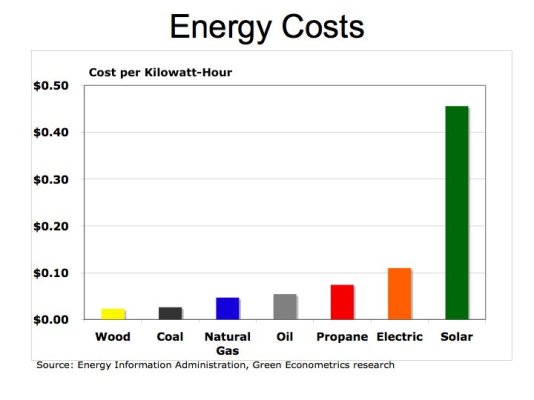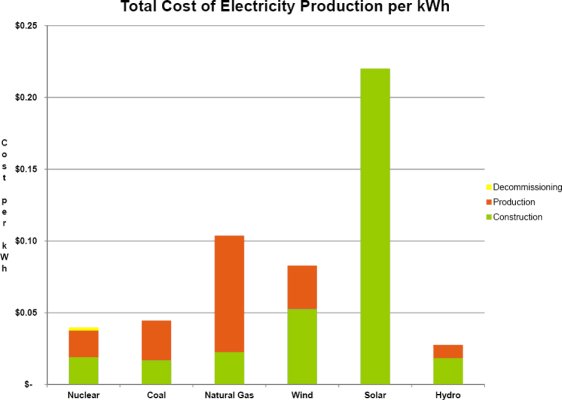The central question was/is what do we do when wind and solar are NOT generating? I wasn't trying to say wind & solar can't augment power generation, but I don't see how they can ever come anywhere near eliminating conventional sources and it may be a very long time before they are at all competitive (more so with solar) with conventional sources. Batteries are at least generations away it seems...but technology may surprise us all.
I don't think that anyone is arguing for a wholesale replacement of conventional sources with either wind or solar, certainly not anytime soon. Most proponents call for an incremental approach to a more diversified energy portfolio that includes a higher percentage of renewables. Wind and solar represent a small position now, but their use *is* expanding, significantly in many places.
Re: the "when they are not generating" issue. Most of what I see discussed in this regard has to do with diversification of sources (both technology and geography), with load balancing via smart grid and variable capacity from conventional sources. Such diversification helps in ways like: 1) some places are fairly consistently windy or sunny or both, 2) for more intermittent places, when it is not sunny/windy in one location, it's likely to be sunny/windy in another location on the grid, 3) it does not have to be "sunny" for photovoltaic systems to produce electricity, they can produce usable, but reduced, levels of power during overcast periods, 4) places/times when it's rather predictably sunny (think Florida in summer) often correspond with peak demand periods (think air conditioning), 5) use your imagination.
Better grid/load balancing as more intermittent sources come on line may indeed require significant technology improvements, but so will advancing clean coal, next gen nuclear, etc. I believe today's engineers are up to the task.
Cost per unit of power still is problematic (more so for photovoltaics), though apparently not insurmountable, given the amount of new capacity that comes on line each year. For now it may indeed be "economically noncompetitive but still worthwhile thanks to transfer payments from other ratepayers/taxpayers" (as Samclem opined above). But teasing out the overall costs, subsidies (direct and indirect), tax incentives, costs to society, environment, etc., is exceedingly difficult and subjective for these things, as already noted by others. From my perspective, the long term benefits far outweigh the comparatively small cost to help foster these industries. Or perhaps we can save our subsidy bucks now and just buy it all from the Chinese in a few years. In any event unit costs *are* trending down and I think it's a reasonable assumption that they will continue to do so as economies of scale, new developments in materials, etc., come to fruition.



